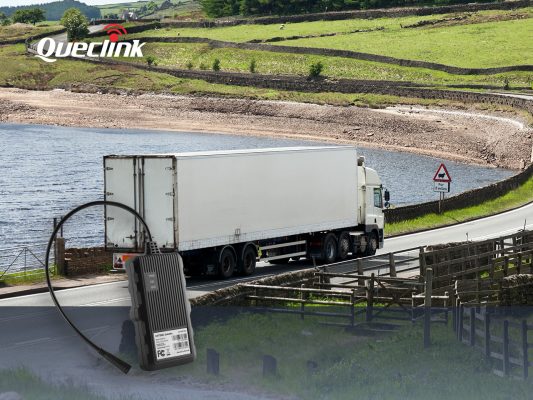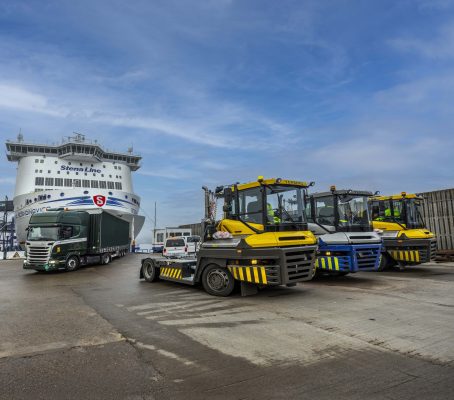The size of your fleet doesn’t matter; from two small vans to multiple large HGV trucks, fleet management will help your business run more effectively.
And, a more effective business has a better bottom line.
Fleet managers handle a lot, from hiring and firing to ensuring the technology used in the tracks and the business performs.

Photo by Seb Creativo on Unsplash
What issues do fleet managers face?
Fleets are made up of hundreds of small moving parts, which means they take a lot of organisation to do well.
Fleet managers are constantly under pressure to keep everything running on time and well – costs low or reducing them when required—hiring qualified drivers, giving training, monitoring driving behaviour, and modifying as needed.
Using multiple technologies to track trucks, communicate with drivers and clients, and ensure that repairs are booked.
Not to mention tackling disgruntled customers and other maintenance.
While there is some outside help and support from the team, the IT company, and others – it falls to them to make sure everything is running smoothly – no matter what.
So how can fleet management be made better?
GPS tracking and telematics are some of the essential points. Giving real-time updates to drivers and clients is irreplaceable.
Telematics also allows fleet managers to ensure that drivers are driving well and maintaining safe behaviours – in line with company policy and driving laws.
While it might seem like endless information, the information provided can help fleet managers make quick decisions when faced with issues.
Maintaining your fleets reputation is a must.
Defensive Driving
The drivers for the fleet should all be adhering to the safest form of driving – defensive driving and looking out for potential hazards, noticing changes in the road conditions and changes in the weather.
Drivers that use defensive driving techniques are less likely to be involved in serious accidents, keeping themselves and others safe on the road.
Defensive driving can also have an impact on insurance. Ensure your drivers all have training in have to drive defensively.
A few critical points:
- Slow down earlier; when slowing down earlier, the driver has time to make better decisions.
- Remain calm under pressure; other drivers can make erratic decisions, which is irritating, but maintaining a cool head is imperative when in charge of large vehicles.
- Have emergency protocols and access to a kit or toolbox, as well as water and food.
- The 3-second rule can save lives by allowing a full three seconds between the car or truck in front reaching a point and the driver reaching it. Three seconds might not seem much, but it makes all the difference when driving at high speed.
However, your company should also have a range of defensive driving pointers and best practice policies.
Inspections
Driver safety is paramount; inspections before and after a drive can help ensure the truck driver is using a vehicle fit for purpose.
Pre and post trips inspections are a requirement already, but the degree to which they are completed varies.
Some tools can be implemented to run the checks on the trucks, and these can give a more definitive answer if there is anything you need to be aware of.
The tools usually give an automated breakdown of everything that needs to be checked by the fleet mechanics and report the situation to the management team.
Maintenance
If you are new to fleet management, then maintenance is one of the best ways to keep your trucks on the road and driving safely.
Rather than completing maintenance on your fleet when something is reported, create a regular maintenance schedule.
A preventative maintenance schedule will give you an in-depth report about the truck and any issues.
Minor regular maintenance like brake pad changes, fluid changes can be done to ensure maximum safety.
This data will help mechanics build an overview of what each truck will need when it is time for more extensive repairs and MOTs.
Not only that, but this valuable information can help you decide when it might be time to replace any of the trucks in your fleet.
Photo by Nigel Tadyanehondo on Unsplash
Breaks and Resting
Truck drivers are notorious for driving for as long as possible. The bottom line is that this can be dangerous. For smaller fleets, it might feel like you need to make big promises and take risks to complete the journey.
However, your drivers need to rest in order to be able to react quickly to any issues.
There are driver limits in place; a driver should be taking a 30-minute break after 8 hours of driving and up to 11 hours before being allowed back on duty.
You can create a sleep and driving schedule that is more beneficial to the rest of your drivers—encouraging them to take regular breaks – and tracking them.
Fatigue is one of the most significant issues facing long-haul drivers, and the legal mandatory minimum might not be enough.
If your driver reports feeling tired or impaired, then encourage them to rest.
Dashcams
Integrating dashcams with your trucks and reporting systems, a fleet manager will have all of the information available immediately.
Not only do dashcams provide reliable information in the event of a crash or accident, but they can display how safe your driver is.
Reviewing the footage at regular intervals, unaccounted inspections will keep your drivers adhering to the protocols that you have in place.
Costs
When fleet managers have access to multiple data streams, they can look at areas where costs can be reduced. Over time, reducing the expenses can create financial space for more trucks to join the fleet or just a healthier bottom line.
Fleet management can be made better and easier with the implementation of some technology and a shakeup in the organisation of truck maintenance.
Keeping drivers and other road users safe while still maintaining your company reputation for on-time deliveries is a must. Implementing some protocols and policies on top of the legally obligated ones can see your fleet running better than ever.



